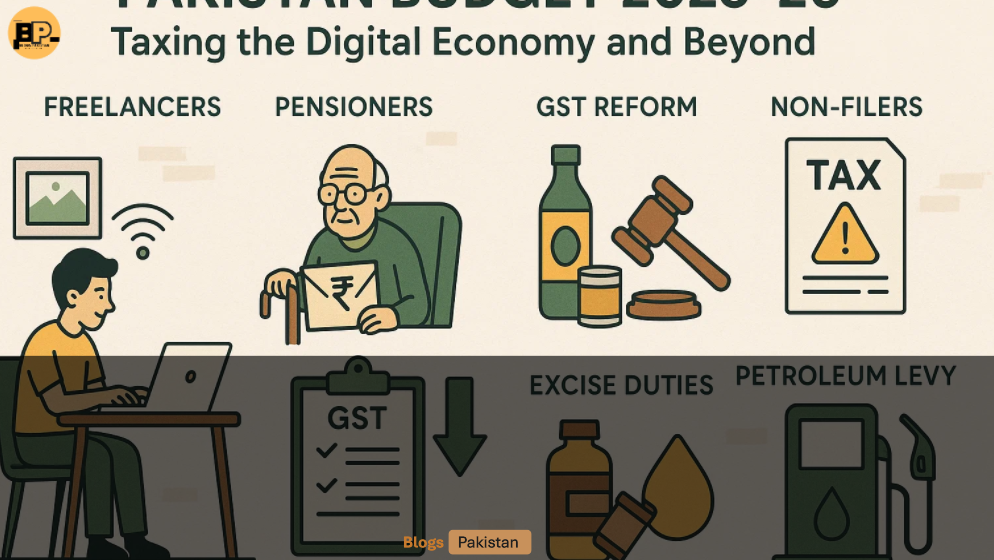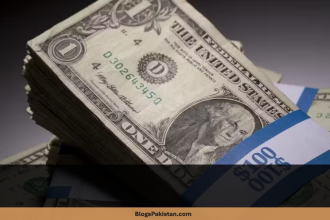The Pakistani government is rolling out its most ambitious budget reform yet, proposing a sweeping Rs. 600 billion in new taxes targeting previously untapped income streams. Among those in the spotlight are freelancers, digital content creators, and high-earning pensioners. With a rapidly evolving digital economy and a ballooning fiscal deficit, these tax measures are stirring both anticipation and anxiety across various segments of society.
In this blog, we’ll dive deep into what these changes mean, especially for freelancers and online earners, explore the government’s strategy behind these reforms, and analyze the broader economic and social implications.
The Freelancers and Digital Creators Are Now on the Radar
For years, the digital workforce—freelancers, YouTubers, TikTokers, vloggers—has operated in a relatively untaxed grey zone. This era may soon end. According to a briefing by Topline Securities, the government is planning to impose a 3.5% tax on income generated from social media platforms like YouTube and TikTok.
This tax alone is projected to bring in Rs. 52.5 billion, making it a cornerstone of the FY2025-26 budget’s digital tax strategy.
Why Target Freelancers and Content Creators?
The freelance economy in Pakistan has grown exponentially over the past decade. Pakistan is ranked among the top five countries globally for freelance work, with thousands of professionals providing services in writing, graphic design, software development, and video production. Simultaneously, platforms like YouTube and TikTok have become profitable for Pakistani content creators, many of whom earn substantial monthly incomes.
Taxing these sectors provides a dual benefit:
- Boosting revenue in Budget without overburdening traditional taxpayers.
- Bringing informal digital incomes into the tax net, aligning with international practices.
Pensioners Facing New Tax Measures
The government is also looking to introduce taxes on pensions exceeding Rs. 400,000 per month, with a proposed rate between 2.5% to 5%. If implemented, this policy could generate between Rs. 20 to 40 billion in revenue.
Pension-related spending has skyrocketed to Rs. 673 billion this year, and projections suggest it could touch Rs. 1 trillion in the near future. This rise is unsustainable without new revenue streams or cuts—neither of which are politically easy options.
GST Adjustments to Reflect Market Prices
Another big-ticket change in the budget is the plan to align GST on select commodities with actual market prices, using Pakistan Bureau of Statistics data as the benchmark.
Example:
- Current GST on sugar: Based on Rs. 72.22/kg
- Actual market price: Around Rs. 150/kg
This simple recalibration is expected to generate an additional Rs. 70-80 billion in taxes. Consumers may see price adjustments in sugar, oil, and other essentials due to this change.
Excise Duty Hike on Snacks, Cigarettes, and Fertilizers
The 2025-26 budget is also geared towards increasing federal excise duty (FED) across various sectors:
- Processed Foods (Snacks, Biscuits): 20% increase in FED, with a roadmap to reach 50% by 2029.
- Cigarettes: A likely increase to discourage consumption while generating billions in revenue.
- Fertilizers & Pesticides: A proposed 5% hike, suggested by the IMF, could fetch over Rs. 30 billion.
These measures aim to curb unhealthy consumption patterns and address environmental and health-related concerns, while also fulfilling IMF-mandated fiscal reforms.
The Carbon Tax & Petroleum Development Levy
In a push toward environmental taxation, the government is contemplating:
- Rs. 5 per liter increase in levy on petrol and diesel.
- Applying the carbon tax on furnace oil, which could generate Rs. 35-80 billion depending on the final rate.
This aligns with global trends encouraging governments to tax pollution-heavy fuels and promote cleaner energy alternatives.
End of the Road for Non-Filers?
Perhaps one of the most significant reforms is the plan to eliminate the non-filer category from Pakistan’s tax system.
Proposed Changes:
- Individuals who are non-filers won’t be allowed to purchase vehicles or real estate.
- Introduction of Section 114C in the Income Tax Ordinance, with adjustments to tax thresholds.
This bold move aims to broaden the tax base by pushing more individuals into the formal tax net and reducing widespread tax evasion.
Retailers and Distributors in the Crosshairs
Retail is another sector under scrutiny. To meet IMF targets, the government must collect Rs. 295 billion from retailers by December 2025. To do this:
- Advance taxes on distributors may be raised.
- Compliance pressure will likely increase through digital POS systems and transaction tracking.
This measure could transform the largely undocumented retail sector into a significant contributor to national revenue.
Freelancers: Prepare for a New Compliance Landscape
How Should Freelancers Get Ready according to Budget ?
- Register as a Tax Filer: If you earn from freelancing, registering with the FBR is now not just smart—it’s essential.
- Track Your Earnings: Maintain digital records of all income from platforms like Upwork, Fiverr, YouTube, etc.
- Consult a Tax Professional: Understand how the 3.5% tax will be applied and what deductions or exemptions may apply.
- Stay Updated: Budget details can evolve—keep an eye on official FBR notifications and tax circulars.
Final Thoughts
The upcoming FY2025-26 budget represents a paradigm shift in Pakistan’s tax policy, aiming to modernize and diversify its revenue base. While these reforms are essential to stabilize the economy and meet IMF conditions, they also demand increased compliance and awareness from citizens—especially freelancers and digital content creators, who are now central to the tax conversation.
This budget could be the beginning of a new financial ecosystem in Pakistan—one where digital prosperity comes hand-in-hand with fiscal responsibility.










